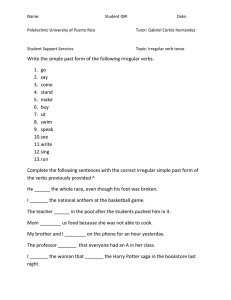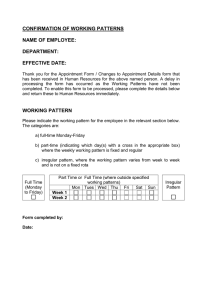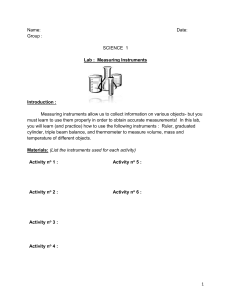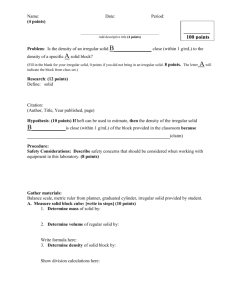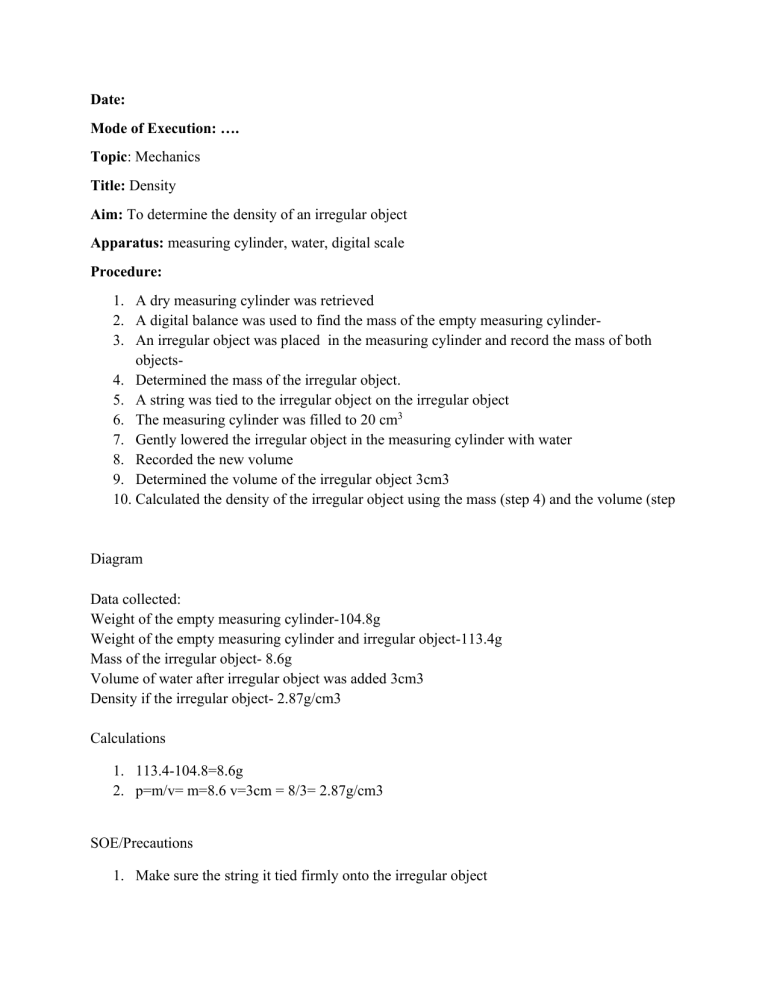
Date: Mode of Execution: …. Topic: Mechanics Title: Density Aim: To determine the density of an irregular object Apparatus: measuring cylinder, water, digital scale Procedure: 1. A dry measuring cylinder was retrieved 2. A digital balance was used to find the mass of the empty measuring cylinder3. An irregular object was placed in the measuring cylinder and record the mass of both objects4. Determined the mass of the irregular object. 5. A string was tied to the irregular object on the irregular object 6. The measuring cylinder was filled to 20 cm3 7. Gently lowered the irregular object in the measuring cylinder with water 8. Recorded the new volume 9. Determined the volume of the irregular object 3cm3 10. Calculated the density of the irregular object using the mass (step 4) and the volume (step Diagram Data collected: Weight of the empty measuring cylinder-104.8g Weight of the empty measuring cylinder and irregular object-113.4g Mass of the irregular object- 8.6g Volume of water after irregular object was added 3cm3 Density if the irregular object- 2.87g/cm3 Calculations 1. 113.4-104.8=8.6g 2. p=m/v= m=8.6 v=3cm = 8/3= 2.87g/cm3 SOE/Precautions 1. Make sure the string it tied firmly onto the irregular object 2. The scale must correctly balance before starting Conclusion After finding out the mass of the object and the volume of said object it is easy to then find the density it has. p=m/v Mark Scheme M&M Density of an Irregular object Follow instructions (1) Experiment is executed properly as outlined in the instructions Accuracy (2) All mass recorded is accurate Volumes recorded are accurate Manipulation of apparatus (7) Mass of beaker Mass of irregular object (use of balance) Tie string securely around the irregular object Measuring 20mL of water Gently releasing the irregular object Reading the new volume at eye level Cleaning up of work area Total (10)
